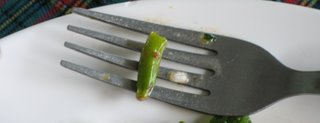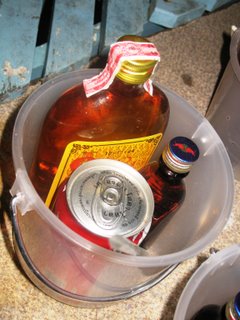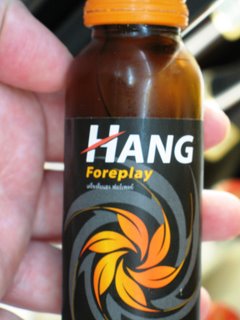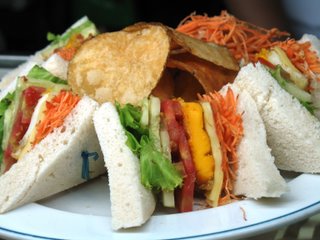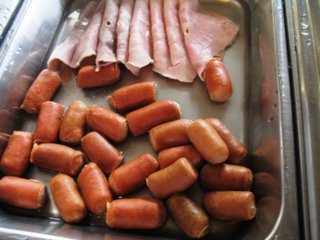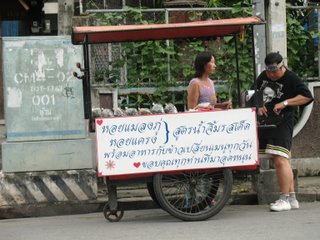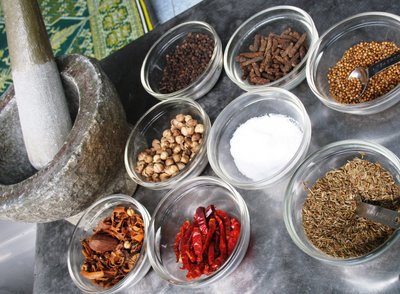My trusty
Lonely Planet Guide was published right after the tsunami, so there was limited mention of lodging on the island. This is where my networking on the backpacker trail came in handy. I met a guy who had recently come from Phi Phi. He said finding lodging was no problem and the water was beautiful. So although I had no idea where I might be able to sleep, I boarded the ferry and headed over anyway.
Once on the island, waiting locals rushed to sell rooms. Laminated photos faded from the sun advertised limited choices. Naturally, they lobbied hard to sell the most expensive rooms first. After those were sold, they conceded and finally spoke to me about more humble offerings.
In the frenzy to snag a room, I agreed to stay at a place within a "7 minute walk to the beach" and a "10 minute walk to town". They shuttled me off to a motorcycle with my pack and I in a side car. We carefully navigated through the rough path. Most of the roads were under construction and the rest were still barely serviceable after the tsunami's destruction. No doubt it was one of the scariest rides of my life!
We somehow manage to arrive at the guest house alive and without damage. The driver immediately whisked my big backpack to my room while I checked in on the red mud street (like Georgia clay). Check in was a table on the side of the road. I kept thinking...the pictures looked nice.....
I entered my room. I had my own private toilet and shower, which was an improvement over the place I stayed in Chiang Mai. I spied my bag in the corner...check...it made it. Then I took in a deep breath and collapsed on the bed. What's that smell? I breathed in again, deeply. Stale and humid...it was the smell of mildew. I scanned the walls for any evidence of mold. Nothing. But the air was thick in the humidity and I couldn't get past the smell. It's then that I noticed an air freshener that long ago used up its life...and it was tied to the fan. My room had obviously been flooded in the tsunami.
While I waited for friends to meet me, I scoped out the local travel booking shops. They offered tours around the island, scuba diving, and rock climbing. Each shop had similar packages, but were slightly different (same same, but different!) I checked out a couple places in the amount of time it took my friends to go through the same hair-raising ride from the dock.
One shop I visited even books rooms. I took a look around. The buildings were wooden, newly constructed, and had beautifully landscaped grounds. I asked to see a room. It was positively stunning. Seriously. Straight out of
Architectural Digest. Carved wood headboards, battique sheets and pillows, double bed. The bathroom was utterly beautiful with a skylight, French doors leading to the bedroom, tropical plants and orchids everywhere...in the BATHROOM!
The stench in my room haunted my memory.
My room was already paid for two nights, but I inquired anyway, "How much?"
Only 50 baht more than I paid!!! (36 baht = $1).
Unbelieveable!!
I asked if they had a vacancy two days from now. He had no idea. First preference went to guests already staying...and none of them appeared to be leaving soon.
I headed back to my room and stewed about what to do. Finally, I decided, to hell with it! I walked over, and booked that beautiful room for the next four nights.
Motioning behind me, the booking agent says says, "But you've already paid for a room over there."
"I don't care. I'm not staying."
He looked perplexed.
"Maybe you can get your money back."
The truth is, I wasn't really worried about it.
Just at that moment, two girls came up and inquired about a room. They obviously walked in the heat and the humidity from the boat. The guy tells him he is now fully booked. They were travel weary and frustrated.
I handed them the key to my old room, "Here you go...this one is paid for the next 2 nights. Enjoy!"
They couldn't believe their luck! "Seriously????"
"Yep, I just need to get my bag out of there."
"Oh...you're an ANGEL!"
It turns out they were traveling for a year and on a very meager budget. "We'll buy you a drink at the pub!"
No worries. I figured it was good backpacker karma.
They entered the room and said, "This is fine. We've stayed in worse."
I have too, but now I'm older and I've got a choice in the matter. I was not staying there....especially when contrasted with the room I got!
After the first day, I got a bad sunburn. Thankfully, staying out of the sun suddenly had an added appeal!



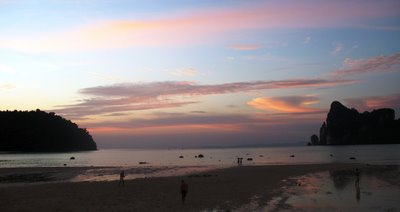
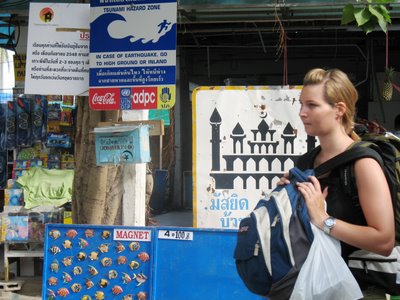
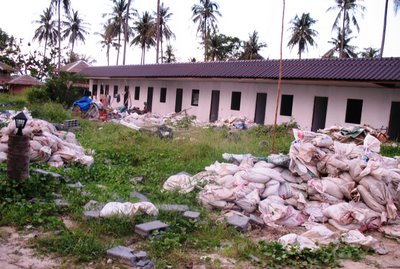
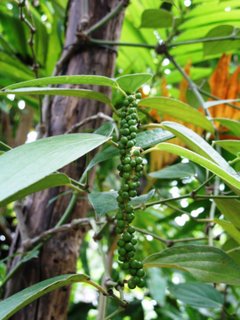
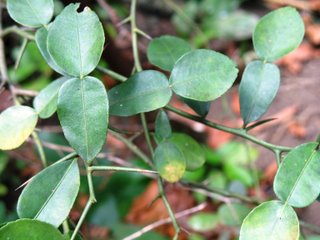
 Like the Kaffir Lime leaf, except this has a lemon essence. Recognized by the double segmented leaf, but the thorns and the 1st leaf segment are shorter.
Like the Kaffir Lime leaf, except this has a lemon essence. Recognized by the double segmented leaf, but the thorns and the 1st leaf segment are shorter. Galangal (The tall plant with the broad leaves)
Galangal (The tall plant with the broad leaves)


